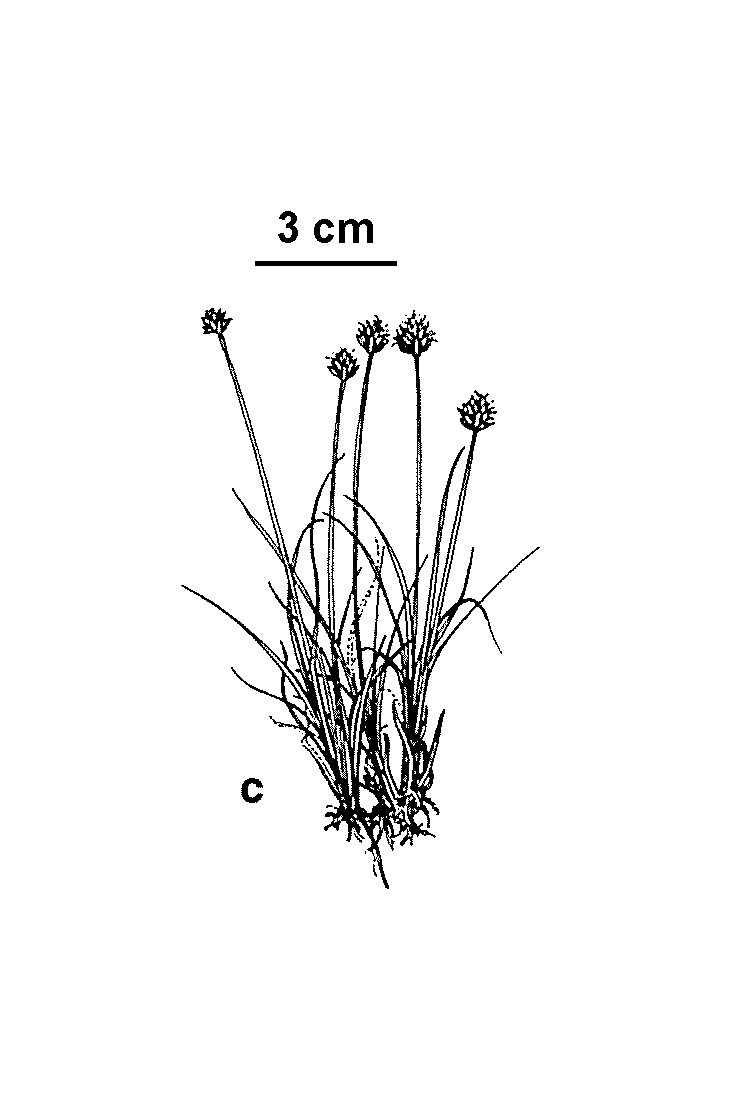Carex cephalotes
F.Muell. Wire-head SedgeRhizome short; shoots densely tufted. Culms erect, terete, smooth, 5–20(–30) cm long, 0.5–1.2 mm diam. Leaves usually shorter than culms, 0.5–1.2 mm wide, margins antrorsely scaberulous; sheath yellow-brown; ligule rounded to truncate. Inflorescence erect, 0.5–1.5 cm long, with 1 spike; lowest involucral bract shorter than inflorescence. Spike with very short portion of male flowers above female flowers; male glumes obtuse, ± hooded, yellow-brown; female glumes obtuse to acute, yellow-brown tinged darker brown, with hyaline margins, 2.5–3 mm long; utricles 2.5–4 mm long, 1.0–1.4 mm diam., ellipsoid to ovoid, nerveless or irregularly few-nerved, glabrous, greenish-brown, orange-brown near apex, spreading or reflexed at maturity, and then female portion of spike cylindrical and ; beak c. 0.5 mm long, with apex split, white; style 2-fid, rarely 3-fid (occasionally a single spike can have one or two flowers that are 3-fid). Nut ellipsoid to ovoid, lenticular or rarely trigonous, pale yellow-brown. Flowers summer.
HNF, VAlp. Also NSW. New Zealand. Very rare in Victoria, confined to sheltered rocky areas on the highest mountains (e.g. Mts Bogong, Feathertop, Hotham, Nelse) near where snow persists late into the season.
Very close to C. pyrenaica Wahl. of Europe, of which it was once treated as a variety. C. pyrenaica has predominantly 3-fid styles and distinctly stipitate utricles. The unispicate inflorescence distinguishes this species from all other Victorian species except C. capillacea and C. archeri. It differs from C. capillacea in having the male part of the spike shorter than the female part, and from C. archeri it differs in the lowest involucral bract being glume-like.
Wilson, K.L. (1994). Cyperaceae. In: Walsh, N.G.; Entwisle, T.J., Flora of Victoria Vol. 2, Ferns and Allied Plants, Conifers and Monocotyledons, pp. 238–356. Inkata Press, Melbourne.
 Spinning
Spinning
